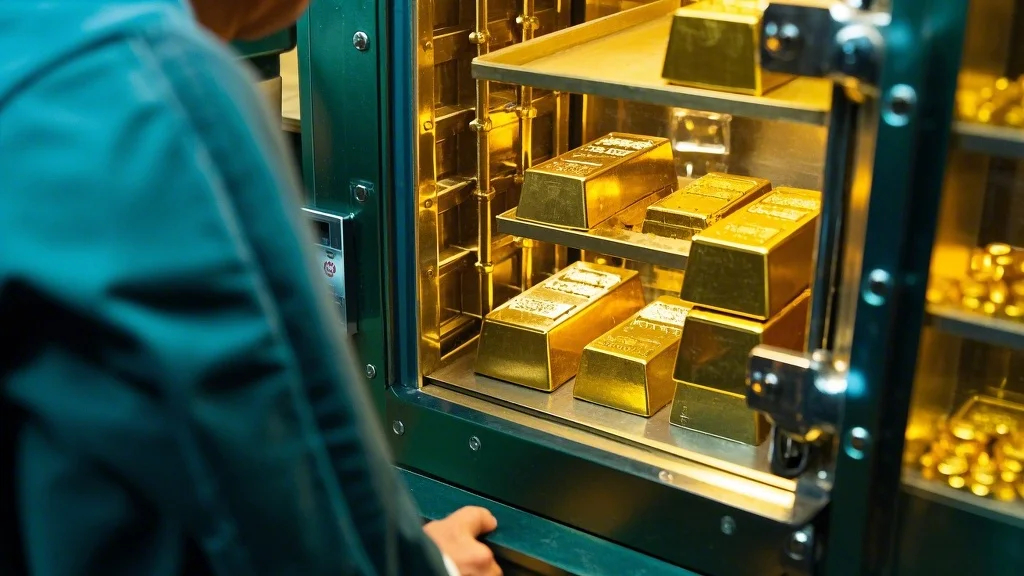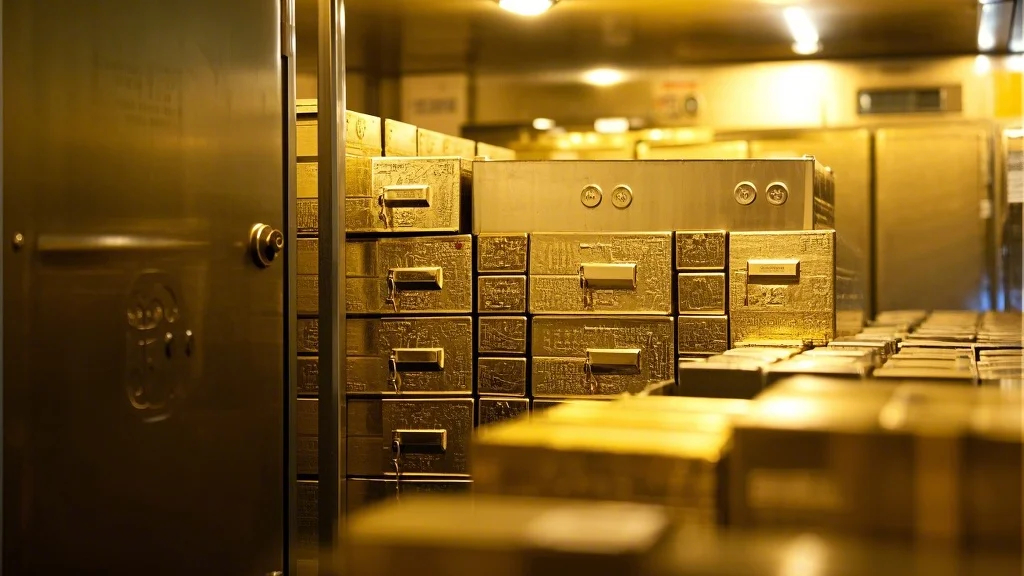Gold has long been considered a timeless and valuable asset, making it a popular choice for investors and collectors alike. However, storing gold safely is a critical aspect of preserving its value and ensuring its security. Whether you own gold bars, coins, or jewelry, proper storage is essential to protect it from theft, damage, and environmental factors. In this part, we’ll explore the key considerations for storing gold securely and the best practices to keep it safe.

1. Choosing the Right Storage Location
The first step in storing gold safely is selecting the right location. For small quantities of gold, such as coins or jewelry, many people choose to store their gold at home. However, this comes with risks, including the possibility of burglary or accidental damage. To mitigate these risks, consider the following:
Home Storage: If you decide to store gold at home, ensure it is in a secure location, such as a fire-resistant safe or a locked drawer. Hide it in an inconspicuous place, as visible storage increases the risk of theft.
Safety Deposit Box: Banks and credit unions offer safety deposit boxes, which are secure and accessible only to the account holder. This is an excellent option for those who want their gold to be professionally stored and insured.
Professional Storage: For larger collections or high-value gold, consider storing your gold in a reputable professional storage facility. These facilities are designed with state-of-the-art security systems, including biometric access controls, surveillance cameras, and alarm systems.
2. Opting for a Fire-Resistant Safe
If you choose to store your gold at home, investing in a fire-resistant safe is a wise decision. Fires can not only destroy your property but also melt or damage your gold. A high-quality fire-resistant safe will protect your gold from extreme temperatures and ensure its safety in case of a fire. Look for safes with ratings such as UL (Underwriters Laboratories) or NFPA (National Fire Protection Association) certifications.
3. Ensuring Water and Environmental Protection
Gold is susceptible to environmental damage, such as moisture and humidity. Storing your gold in a location that is prone to water damage or high humidity can lead to rust, tarnish, or even corrosion, especially for exposed metals or jewelry. To prevent this, consider using a dehumidifier in your storage area or choosing a storage solution that is designed to manage moisture.
4. Securing Your Gold with Multiple Layers of Protection
Security is key when storing gold. To ensure your gold is safe, consider using multiple layers of protection, such as a combination of a safe, lockbox, and alarm system. For example, store your gold in a fire-resistant safe and lock it with a high-quality secure lock. Additionally, install security cameras and alarms in the area where your gold is stored to deter potential intruders.
5. Documenting Your Gold Collection
Documenting your gold collection is an often-overlooked but critical step in storing gold safely. Keep a detailed inventory of your gold, including its type, weight, and serial numbers (if applicable). This documentation not only helps in tracking your gold but also serves as evidence in case of theft or loss. Store this information in a secure location, separate from your gold.
6. Considering Global Storage Solutions
For those with international gold holdings or who wish to diversify their storage locations, global storage solutions are becoming increasingly popular. These services allow you to store your gold in a secure location in another country, reducing the risk of local political or economic instability. However, ensure that the storage provider is reputable and has a proven track record of security and transparency.
7. Insurance
Regardless of where you store your gold, it’s essential to have proper insurance coverage. Contact your insurance provider to discuss your gold holdings and ensure that they are covered under your policy. Most home insurance policies do not cover gold stored at home, so you may need to purchase additional coverage for your gold.
Storing gold safely requires a combination of careful planning, high-quality storage solutions, and security measures. In this part, we’ll delve deeper into additional tips and tricks to help you safeguard your gold, including how to maintain its quality, the importance of accessibility, and how to handle large quantities of gold.
1. Maintaining the Quality of Your Gold
Gold is a durable precious metal, but it can still degrade over time if not stored properly. To maintain the quality of your gold, consider the following tips:
Avoid Exposure to Extreme Conditions: Keep your gold in a stable environment with consistent temperature and humidity levels. Rapid changes in temperature or humidity can cause damage.
Use Acid-Free Storage Solutions: If you’re storing gold in a container, such as a safe or drawer, ensure that the materials used are acid-free and free from chemicals that could react with gold.
Clean and Polish Regularly: For gold jewelry or coins, regular cleaning and polishing can help maintain their shine and prevent tarnishing. However, be cautious when using cleaning products, as some can cause damage.
2. Accessibility vs. Security
While security is paramount, it’s also important to consider the accessibility of your gold storage. If you store your gold in a location that is difficult to access, it may become impractical to retrieve it when needed. For example, if you’re storing gold in a safety deposit box, ensure that you can access it during the bank’s business hours. If you’re storing gold at home, make sure the safe or storage location is easy to access without compromising security.
3. Handling Large Quantities of Gold
If you own a large collection or significant quantities of gold, additional precautions are necessary. Here are some tips for storing large amounts of gold:
Professional Storage: Consider storing your gold in a professional storage facility, especially if you have a large collection or high-value items. These facilities are designed to handle large quantities and offer robust security measures.
Divide and Conquer: If you choose to store your gold at home, divide it into smaller, manageable quantities and store each portion in separate secure locations. This reduces the risk of losing everything in case of a breach in security.
Use Certified Containers: For larger quantities, invest in certified containers that meet industry standards for storing precious metals. Look for containers that are fire-resistant, waterproof, and tamper-proof.
4. Protecting Your Gold from Theft
Theft is one of the biggest risks when storing gold, especially in residential settings. To protect your gold from theft, consider the following measures:
Install a Security System: Equip the area where your gold is stored with a security system, including alarms, motion sensors, and cameras. This deters intruders and provides a record of any suspicious activity.
Choose a Secure Lock: Use high-security locks, such as reinforced steel locks with anti-drill plates, to secure your storage container.
Consider a Gun Safe: Some gun safes are designed with a high degree of security and can be a good option for storing gold, especially if you already own one. Ensure that the safe is fire-resistant and waterproof.
5. The Importance of Location Security
